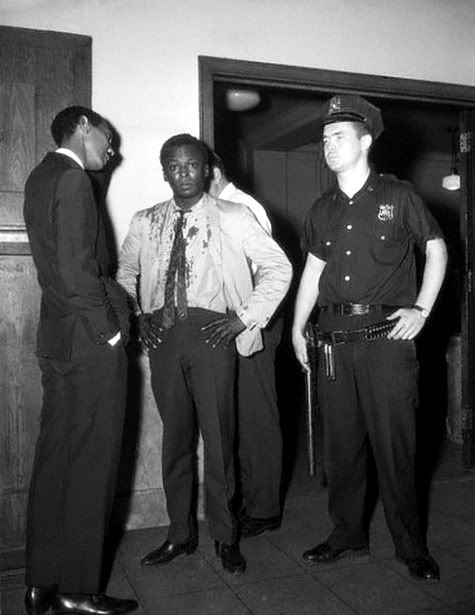Joe Lovano

Having recently reviewed new releases from
Joshua Redman and
Fly, I have been thinking a lot about the saxo
phone-bass-drums trio. Though I usually enjoy these albums, I am often left feeling there is a certain underlying sameness present on these albums: Sonny Rollins plus John Coltrane with bits of Ornette Coleman added for flavor. This is not to say that these saxophonists all sound the same, but that they are often drawing from the same well. However, there is one saxophone trio album that has been on my mind lately, chiefly because it does not sound like any of the other saxophone trio albums that have passed through my iPod lately.
A major reason this album sticks out from most other saxophone trios is Lovano's sound on tenor. Though he is steeped in the same rhythmic and harmonic traditions as Redman, Mark Turner, Chris Potter, and any number of other tenormen, his tone is a throwback to the gruff sounds of Ben Webster or Coleman Hawkins. Whereas most current tenor saxophonists sound much like John Coltrane or Joe Henderson, with a clean, even tone, Lovano almost sounds as if it is a struggle to make a tone on his horn. It is a refreshing deviation from the norm, and one of the traits that first drew me to Lovano's work.For an example of Lovano's sound, see this YouTube of Lovano playing in a trio setting:
Lovano's signature sound is on full display on
Sounds of Joy, but the album is of course also notable for his improvisations and the alchemy cultivated between Lovano, bassist Anthony Cox, and drummer Ed Blackwell. For a group that ostensibly did not play much together live (though I could be wrong), these three played very well together (which is not a surprise in the case of Blackwell - if he could keep up with Ornette Coleman, then he could hang with anyone else). Apropos of Coleman, the tunes on the album (including four Lovano originals) are quite reminiscent of Ornette in that they feature simple but catchy melodies that stand out on their own.
But I digress. One of the lingering criticisms of contemporary jazz is that with so many players developing within an institutionalized jazz education structure (under which instrumentalists study mostly the same stylistic forebears at the conservatory/university), most (if not all) of the up-and-coming jazz musicians sound an awful lot alike, save for some nuances. Someone as distinctive as Thelonious Monk could never make it out of the conservatory without losing what makes him unique, according to this line of criticism. Listening to someone like Lovano, whose sound reflects an era of jazz which sometimes receives short shrift from modern players, is a refreshing foray into an alternate universe of jazz, where instrumentalists can develop out of a much more diverse pool of influences.
EXTRA CREDIT: Those looking for more Lovano would do well to check out Grand Slam , a live recording featuring Lovano with Jim Hall, George Mraz, and Lewis Nash. If you can handle that, follow it up with any of Lovano's albums with Paul Motian and Bill Frisell (including I Have the Room Above Her
, a live recording featuring Lovano with Jim Hall, George Mraz, and Lewis Nash. If you can handle that, follow it up with any of Lovano's albums with Paul Motian and Bill Frisell (including I Have the Room Above Her , Time and Time Again
, Time and Time Again , and Sound of Love
, and Sound of Love ).
).
Track Listing: Sounds of Joy; Strength and Courage; I'll Wait and Pray; Cedar Avenue and Space; Bass and Space; Ettenro; Until the Moment Was Now; This One's For Lacy; 23rd Street Theme
Personnel: Joe Lovano, saxophone; Anthony Cox, bass; Ed Blackwell, drums
 If Charlie Parker Was a Gunslinger ran this photo of Miles Davis a few days ago with the accompanying newspaper caption:
If Charlie Parker Was a Gunslinger ran this photo of Miles Davis a few days ago with the accompanying newspaper caption: 



